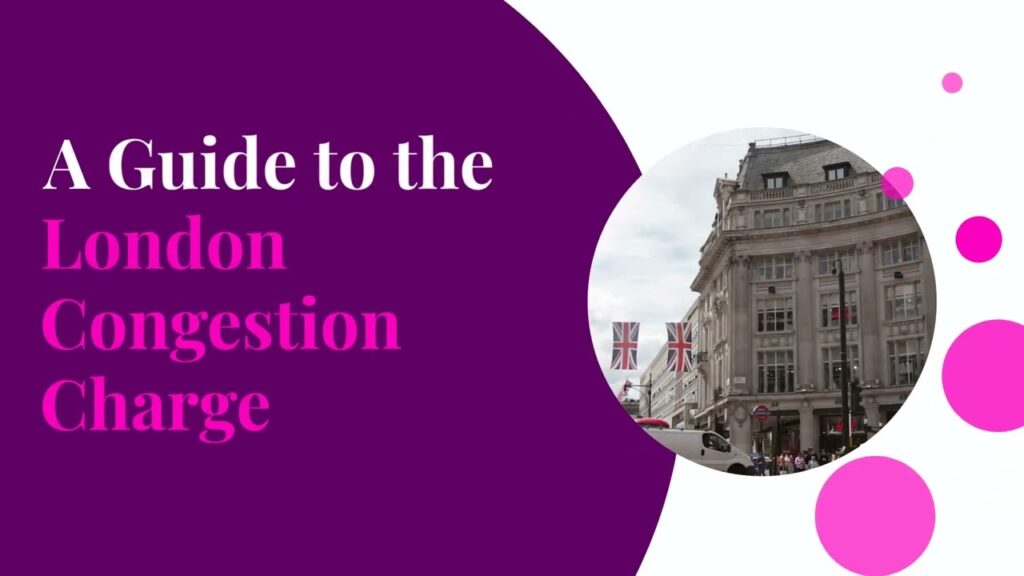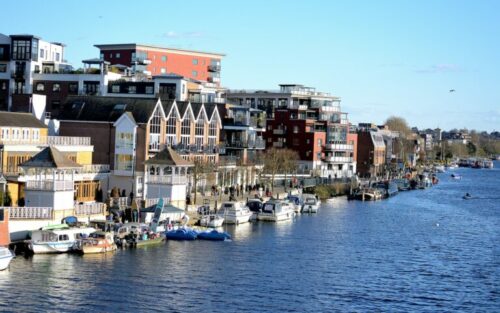London’s Congestion Charge is a hot topic for both residents and visitors to the city. If you’ve ever wondered how this system actually works, you’re in luck. In this article, we’ll demystify the Congestion Charge and give you all the information you need to navigate the streets of London without breaking the bank. So buckle up, grab a cup of tea, and get ready to discover how this handy scheme keeps traffic flowing and maintains the charm of one of the world’s most bustling cities. Plus, we’ll answer some frequently asked questions along the way to ensure you’re fully informed. Let’s dive into the fascinating world of the Congestion Charge!
Concept of Congestion Charge
Definition of Congestion Charge
The Congestion Charge is a form of road pricing implemented in London, which aims to reduce traffic congestion and improve air quality within the city center. It is a fee that motorists must pay when driving within a designated zone during specified times. The charge was introduced in 2003 as an initiative by the Mayor of London, with the objective of encouraging people to use public transport and promote sustainable modes of travel.
Rationale behind Congestion Charge
The main rationale behind the implementation of the Congestion Charge is to tackle the significant traffic congestion issues that London faces. With millions of vehicles on the roads each day, the city experiences high levels of congestion, resulting in longer travel times, increased air pollution, and a negative impact on the overall quality of life for residents and commuters. By charging motorists for driving within the congestion zone, it is intended to discourage unnecessary car usage and promote alternative means of transport, such as walking, cycling, and public transportation.
History of Congestion Charge in London
The history of the Congestion Charge in London dates back to February 2003 when the scheme was first introduced. It was the first congestion charging scheme in the United Kingdom and the largest of its kind globally at the time. The initiative was launched following a successful public consultation and extensive research on similar schemes operating in other cities worldwide. The initial zone covered a 21-square kilometer area in Central London, and the charging fee was set at £5 per day. Over the years, the scheme has undergone several changes, including adjustments to the charging zone, fee increase, and the introduction of technology to improve the efficiency of the payment system.
Geographical Scope of the Charge
Areas Covered
The Congestion Charge zone covers a designated area in Central London, including popular districts like Westminster, the City of London, parts of Camden, Kensington and Chelsea, and certain parts of Lambeth and Southwark. Within this area, motorists are required to pay the congestion charge when driving between the hours of 7 am to 10 pm, Monday to Friday, excluding public holidays.
Map Representation
To provide clarity to motorists, a detailed map representation of the Congestion Charge zone is available on the Transport for London (TfL) website. It clearly indicates the boundaries of the charging zone, helping drivers determine whether their intended route falls within the designated area.
Excluded Areas and Special Zones
Certain areas are excluded from the Congestion Charge zone. These include the locations outside of Central London, such as outer boroughs and suburban areas. Additionally, specific roads or locations within the designated zone, such as bridges and tunnels, may have separate toll charges or exemptions. It is essential for motorists to familiarize themselves with these exclusions and any special zones to ensure compliance with the charging regulations.
Entities Liable to the Charge
Vehicle Types
When it comes to the liability for paying the Congestion Charge, it includes various types of vehicles. This encompasses cars, motorcycles, vans, minibuses, coaches, and heavy goods vehicles. All such vehicles that fall within the scope of the charging zone during the specified operational times are required to pay the daily congestion charge fee.
Exemptions and Discounts
Certain vehicle types and specific circumstances may be eligible for exemptions or discounts from the Congestion Charge. For instance, electric vehicles and some ultra-low emission vehicles may be exempt from paying the charge. Additionally, residents living within the Congestion Charge zone, who meet certain criteria, are entitled to a 90% discount. It is crucial for vehicle owners to review the eligibility criteria set by Transport for London to determine if they qualify for any exemptions or discounts.
Visitors and Foreign Vehicles
Visitors to London, including those driving rental cars, are not automatically exempt from paying the Congestion Charge. All vehicles, regardless of their origin, are required to pay unless they qualify for an exemption or discount. It is essential for visitors to plan and be aware of the Congestion Charge regulations in advance to avoid any penalties or fines.
Implementation of the Charge
Operational Times and Days
To effectively manage traffic congestion, the Congestion Charge is operational between 7 am and 10 pm, Monday to Friday, excluding public holidays. It is important for motorists to note these times and ensure they make the necessary arrangements for payment if they are driving within the charging zone during these hours.
Identifying Liable Vehicles
Transport for London employs a combination of manual enforcement and Automatic Number Plate Recognition (ANPR) cameras to identify vehicles liable for the Congestion Charge. ANPR cameras are strategically positioned throughout the charging zone and capture the license plate numbers of vehicles entering or driving within the designated area. This information is then cross-referenced with the vehicle ownership database to determine if the appropriate payment has been made.
Electronic and Physical Signage
To help drivers identify the boundaries of the Congestion Charge zone and provide information on payment requirements, electronic and physical signage has been installed throughout the area. Clear signs are displayed at entry points to the charging zone, reminding motorists of their obligation to pay the charge. It is important for drivers to pay attention to these signs and ensure compliance to avoid any penalties.
Payment Methods and Fines
Availability of Payment Modes
Transport for London provides various methods for paying the Congestion Charge. Motorists can make payments online through the TfL website, via phone, by setting up an Auto Pay account, or at selected retail outlets. Additionally, payment can be made in advance or by midnight of the following charging day. It is important for drivers to choose the payment method that suits their needs and ensures timely compliance.
Payment Deadlines
The Congestion Charge payment must be made by midnight of the following charging day to avoid penalties. It is the responsibility of the motorists to ensure prompt and accurate payment within the specified deadline. Failure to pay within the required timeframe may result in penalties and additional charges.
Fare Evasion and Penalties
Non-compliance with the Congestion Charge regulations may result in fare evasion penalties. If a vehicle is identified as being liable for the charge, but no payment has been made or an incorrect payment has been submitted, the registered owner of the vehicle will receive a Penalty Charge Notice (PCN). This notice includes information on the penalty amount and the appeals process.
Appeal Process for Penalties
In the event of receiving a PCN, vehicle owners have the right to appeal the decision within a specified timeframe. The appeals process involves submitting a formal request to Transport for London, providing relevant evidence to support the appeal. A detailed guide on the appeals process, along with the necessary forms, is available on the TfL website.
Effectiveness of the Congestion Charge
Impact on Traffic
Since its implementation, the Congestion Charge has demonstrated positive effects on reducing traffic congestion within the designated zone. Studies have shown a considerable decrease in the number of private vehicles entering the charging zone, leading to smoother traffic flow, reduced congestion, and improved travel times. The scheme has also encouraged a shift towards more sustainable modes of transport, such as cycling and public transportation, further contributing to reducing traffic volumes.
Influence on Public Transport
The Congestion Charge has had a significant influence on public transport usage in London. With the aim of encouraging people to switch from using private vehicles to public transport, the scheme has led to increased demand for buses, trains, and other forms of public transportation. This increased demand has facilitated the improvement and expansion of public transport services to cater to the growing number of commuters, resulting in enhanced connectivity, reduced overcrowding, and more reliable transport options.
Environmental Implications
One of the key objectives of the Congestion Charge is to address the environmental impact of heavy traffic within the charging zone. By reducing the number of vehicles on the road, the scheme has contributed to improvements in air quality, reduced carbon emissions, and a greener and more sustainable environment. The promotion of electric and ultra-low emission vehicles through exemptions and discounts has further encouraged the adoption of cleaner and more environmentally friendly vehicles within the charging zone.
Public Perception and Response
Public Reaction over Time
The introduction of the Congestion Charge in London sparked considerable public reaction, with varying opinions on its effectiveness and impact. Initial public sentiment was mixed, with concerns raised regarding the financial burden it may place on motorists and potential increases in traffic congestion in areas outside the charging zone. Over time, however, public perception has shifted, and the scheme has gained wider acceptance as the positive effects on traffic flow, air quality, and sustainable transport have become more evident.
Protests and Opposition
Despite the overall acceptance of the Congestion Charge, there have been instances of protests and opposition, particularly from specific interest groups. Some motorists and business owners have expressed concerns that the scheme may negatively impact their livelihoods or accessibility to certain areas in Central London. However, Transport for London has been actively engaging with stakeholders and continuously reviewing and adjusting the scheme to address these concerns and ensure a fair and balanced approach.
Support and Approval
The Congestion Charge has also garnered significant support and approval from various stakeholders. Environmentalists, public health advocates, and proponents of sustainable transport have praised the scheme for its positive impact on reducing pollution and promoting healthier modes of transport. The scheme has also received support from businesses within the charging zone, as the reduced traffic congestion and improved transport links have enhanced access to their establishments and facilitated deliveries.
Changes and Proposed Future Developments
Policy Adjustments since Initiation
Since its inception, the Congestion Charge has undergone several policy adjustments to ensure its effectiveness and address emerging challenges. This has included changes to the charging zone boundaries, adjustments to the daily fee, and the introduction of technology improvements such as contactless payment and automatic number plate recognition.
Potential Extensions and Reforms
Proposed future developments for the Congestion Charge include potential extensions of the charging zone to cover more areas of London affected by traffic congestion, as well as reforms to the fee structure to further incentivize the use of sustainable modes of transport. The introduction of a more dynamic pricing system based on vehicle emissions and time of day is also being explored as a way to optimize traffic flow and encourage further reductions in carbon emissions.
Predicted Future of Congestion Charge
The future of the Congestion Charge in London appears to be centered around continuous improvement and adaptation. With increasing concerns about climate change, pollution, and traffic congestion, it is likely that the scheme will continue to play a vital role in promoting sustainable transport and reducing private vehicle usage. As technology further advances, it is foreseeable that payment systems and enforcement methods will become more streamlined, providing a more seamless experience for motorists while ensuring the efficient management of traffic within the city center.
Comparison with Other Cities
Congestion Charging Systems in other Cities
London’s Congestion Charge has served as a model for other cities worldwide that face similar traffic congestion challenges. Several cities, including Stockholm, Milan, and Singapore, have implemented their own congestion charging systems with varying degrees of success. Each city has tailored its scheme to suit its specific needs and characteristics, taking into account factors such as geographical scope, fee structure, and exemptions.
Success and Problems elsewhere
While congestion charging schemes have proven successful in many cities, they have also encountered challenges. In some cases, initial opposition and public resistance were observed, but over time, the benefits of reduced traffic congestion and improved air quality have become more evident. However, each city faces unique challenges based on its urban layout, public transport infrastructure, and cultural factors, which must be considered when assessing the success of their respective schemes.
Lessons for and from London
The experience of implementing the Congestion Charge in London provides valuable lessons for other cities considering similar schemes. Key lessons include the need for comprehensive public consultation and engagement during the planning stages to ensure buy-in from stakeholders. Additionally, ongoing monitoring and evaluation of the scheme’s impact, along with flexibility to make adjustments based on evolving needs, are crucial for long-term success. London’s experience highlights the importance of balancing the economic and environmental aspects of congestion charging to achieve a sustainable and efficient transport system.
FAQs
What are the Current Rates?
As of [insert current year], the standard Congestion Charge rate for driving within the charging zone is £15 per day. This amount is subject to change, and it is essential to check the Transport for London website for the most up-to-date information regarding rates and any potential exemptions or discounts that may apply.
How can I appeal a Fine?
If you believe you have been incorrectly issued a Penalty Charge Notice (PCN), you have the right to appeal. The appeals process involves submitting a formal request to Transport for London within 28 days of receiving the PCN. Detailed guidance on the appeals process, along with the necessary forms, can be found on the TfL website.
Can I pay in advance?
Yes, you can pay the Congestion Charge in advance. The payment can be made on the day of travel or up to 90 days in advance. By paying in advance, you can avoid the risk of forgetting to make the payment on the day or facing any penalties for non-compliance.
What if I have a Disabled Badge?
Vehicles displaying a valid Blue Badge are eligible for an exemption from the Congestion Charge. If you own a Blue Badge, it is important to register it with Transport for London to ensure that you are not charged when driving within the charging zone. Make sure to review the eligibility criteria and necessary documentation required for registering your Blue Badge on the TfL website.
How have Business been affected?
The impact of the Congestion Charge on businesses within the charging zone has been a topic of discussion. While concerns have been raised regarding accessibility and potential reductions in customer footfall, the positive effects of reduced traffic congestion and improved public transport links have also benefited many businesses. These improvements have facilitated deliveries, improved access for customers, and created a more pleasant environment for shopping and leisure activities. Overall, the impact on businesses may vary depending on the specific location and nature of the business.
As the Congestion Charge continues to evolve and adapt to changes in the city’s transportation needs, it remains an essential tool in managing traffic congestion and promoting sustainable travel in London. With ongoing support from stakeholders and continuous evaluation of its effectiveness, the Congestion Charge has the potential to further improve traffic flow, reduce pollution, and enhance the quality of life for residents and visitors in the city.




